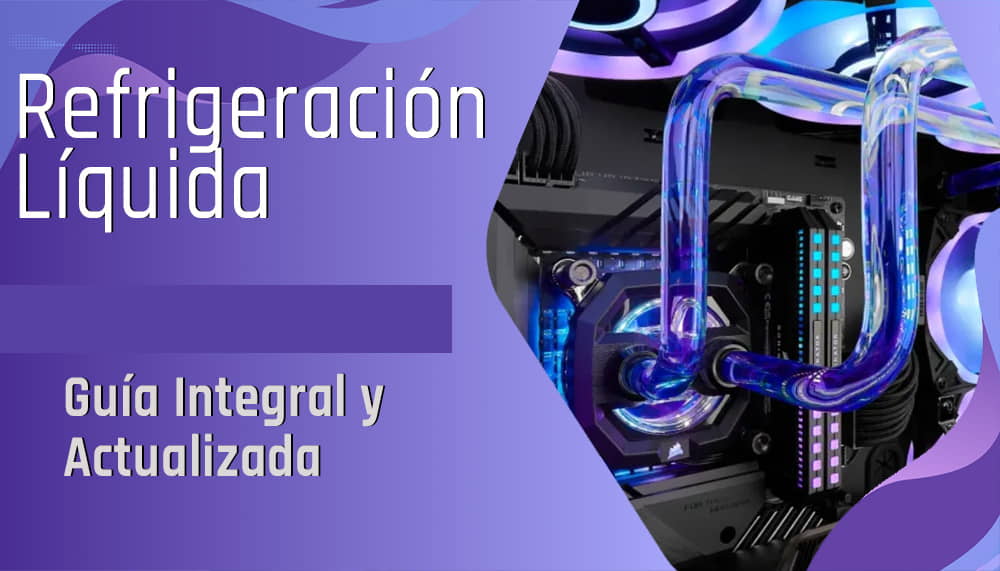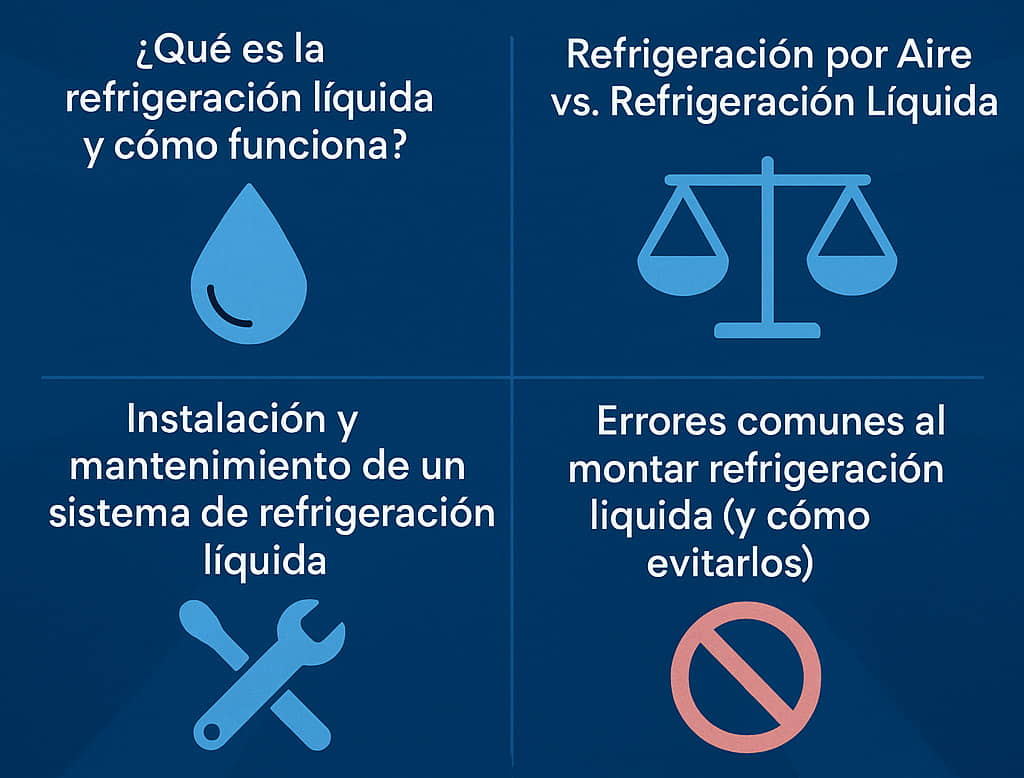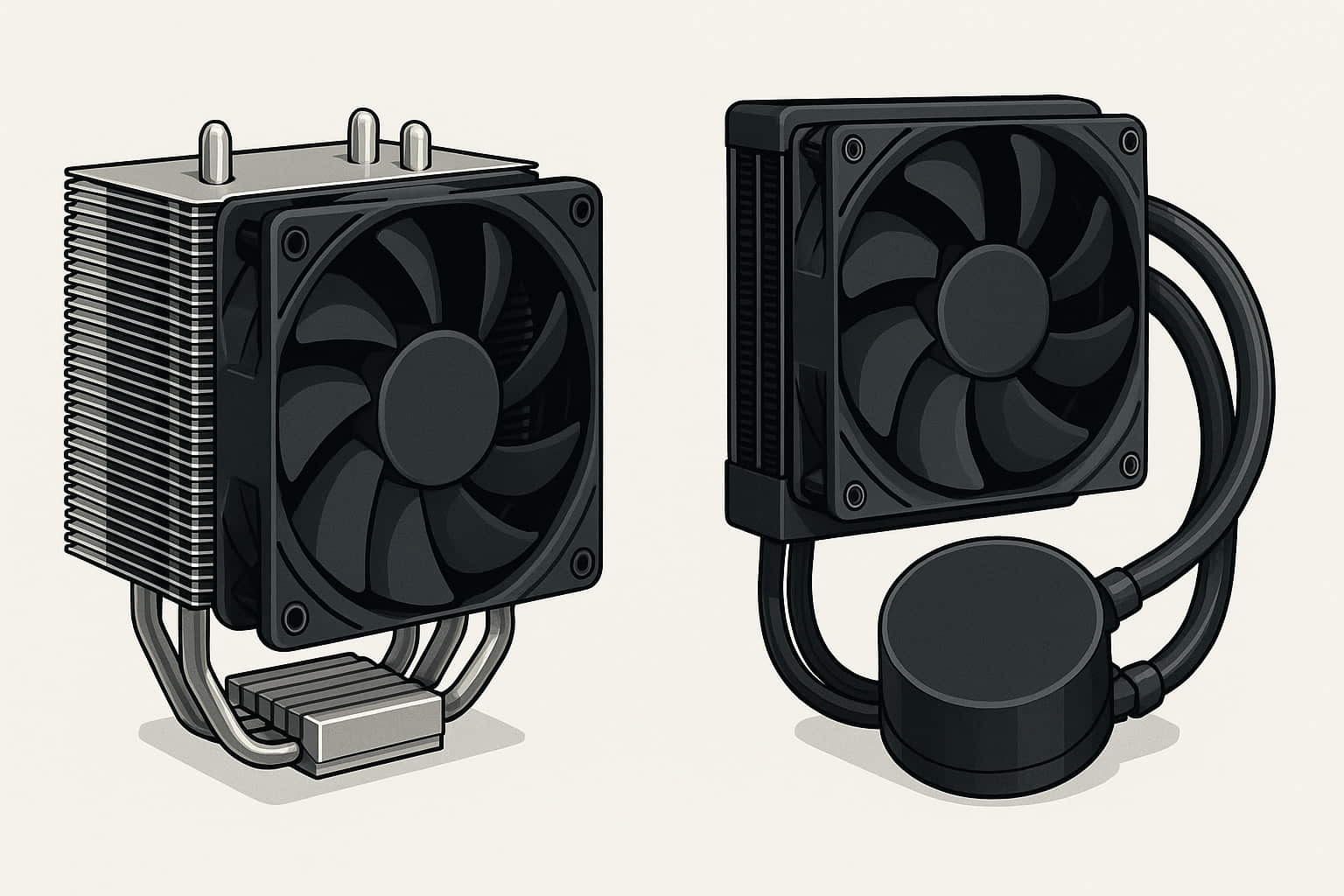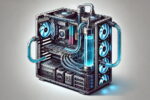Liquid cooling has become the gold standard for enthusiasts, overclockers, and professionals seeking maximum performance and thermal stability from their equipment. In this definitive guide, we explore how it works, what its advantages are, what you should keep in mind when installing it, and the latest industry trends for 2025. We also offer product recommendations available at Ibertrónica, and consolidate the best of our specialized articles so you don’t miss a thing.
🚀 What is liquid cooling and how does it work?
This cooling system uses a circulation system of a cooling fluid through thermal blocks (waterblocks) placed on key components (mainly CPU and GPU). The liquid absorbs the heat and transports it to a radiator where it is dissipated, usually by fans.
Main advantages:
-
🔇 Lower noise level compared to air systems.
-
🌡️ Greater thermal dissipation capacity.
-
🎯 Premium aesthetics and customization possibilities.
-
⚙️ Ideal for overclocking configurations and extreme gaming.
📘 More information:
👉 Introduction to Liquid Cooling Systems for High-Performance PCs
⚔️ Air Cooling vs. Liquid Cooling
| Feature | Air | Liquid |
|---|---|---|
| Thermal efficiency | Medium/High | High/Very high |
| Noise level | Moderate | Low (with good setup) |
| Aesthetics | Limited | High customization |
| Price | Cheaper | More face |
| Installation complexity | Easy | Medium/High |
| Maintenance | Almost none | Requires periodic inspections |
📘 Learn more here:
👉 Liquid cooling for computer equipment
🛠️ Installation and maintenance
Basic installation steps:
-
Preparation: Read the kit instructions carefully and check compatibility. with your case and CPU.
-
Mounting the block on the CPU: Use thermal paste and fit the waterblock securely.
-
Installing the radiator: Place it in a well-ventilated area (top or front).
-
Tube Connection: Make sure there are no kinks or leaks.
-
Electrical Connection: Fans and pump to PWM connectors.
Recommended Maintenance:
-
Check the fluid status every 6 months (in custom kits).
-
Clean the radiators and fans with compressed air.
-
Monitor temperature levels with software like HWMonitor or AIDA64.
📘 Learn with our step-by-step tutorial:
👉 Liquid Cooling – How to Build Your Cooling System
❌ Common Mistakes When Building Liquid Cooling (and How to Avoid Them)
-
Do not check compatibility of the radiator with the chassis.
-
Using too little or too much thermal paste.
-
Install the pump above the radiator (it may generate bubbles).
-
Do not purge the system in custom configurations.
-
Ignore basic maintenance.
📘 You might also be interested in:
👉 Homemade Liquid Cooling, Its Dangers
🔮 Liquid Cooling in 2025: New Technologies and Trends
The year 2025 brings significant improvements in:
-
Ultra-thin, high thermal flow radiators.
-
Smart pumps with automatic flow control.
-
Cooling for NVMe SSDs and VRMs.
-
AIO kits with integrated ARGB lighting and advanced control software.
📘 Check out everything new in our current guide:
👉 Liquid Cooling 2025: Complete Guide
✅ Conclusion
This cooling system is no longer just for enthusiasts: it is an investment in stability, performance, and aesthetics. Whether you’re looking to upgrade your current system or build a system from scratch, this guide gives you a solid foundation for making informed decisions.
Are you ready to take the next level of thermal performance?
Explore our liquid cooling category.









